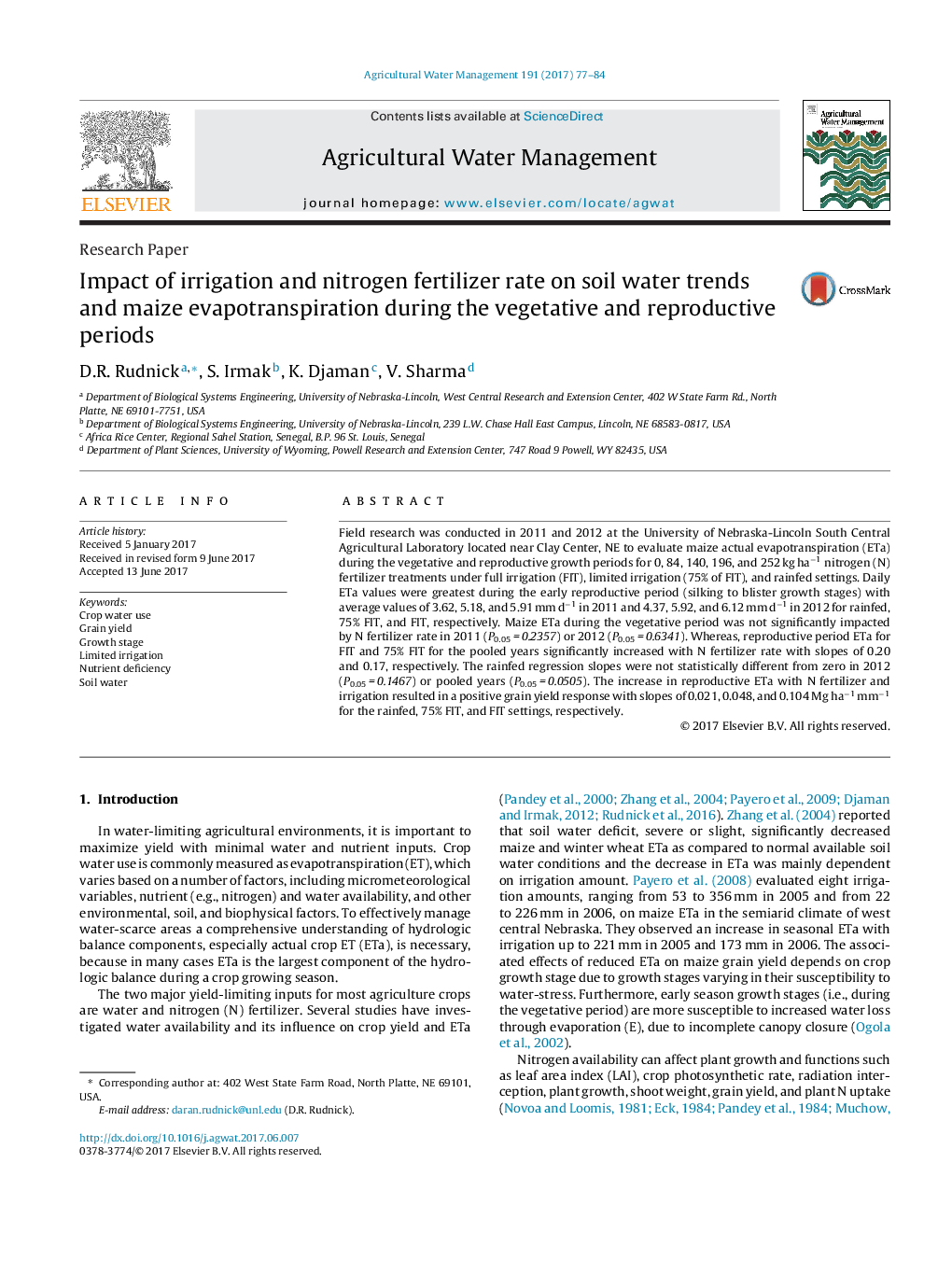| Article ID | Journal | Published Year | Pages | File Type |
|---|---|---|---|---|
| 5758296 | Agricultural Water Management | 2017 | 8 Pages |
Abstract
Field research was conducted in 2011 and 2012 at the University of Nebraska-Lincoln South Central Agricultural Laboratory located near Clay Center, NE to evaluate maize actual evapotranspiration (ETa) during the vegetative and reproductive growth periods for 0, 84, 140, 196, and 252 kg haâ1 nitrogen (N) fertilizer treatments under full irrigation (FIT), limited irrigation (75% of FIT), and rainfed settings. Daily ETa values were greatest during the early reproductive period (silking to blister growth stages) with average values of 3.62, 5.18, and 5.91 mm dâ1 in 2011 and 4.37, 5.92, and 6.12 mm dâ1 in 2012 for rainfed, 75% FIT, and FIT, respectively. Maize ETa during the vegetative period was not significantly impacted by N fertilizer rate in 2011 (P0.05 = 0.2357) or 2012 (P0.05 = 0.6341). Whereas, reproductive period ETa for FIT and 75% FIT for the pooled years significantly increased with N fertilizer rate with slopes of 0.20 and 0.17, respectively. The rainfed regression slopes were not statistically different from zero in 2012 (P0.05 = 0.1467) or pooled years (P0.05 = 0.0505). The increase in reproductive ETa with N fertilizer and irrigation resulted in a positive grain yield response with slopes of 0.021, 0.048, and 0.104 Mg haâ1 mmâ1 for the rainfed, 75% FIT, and FIT settings, respectively.
Related Topics
Life Sciences
Agricultural and Biological Sciences
Agronomy and Crop Science
Authors
D.R. Rudnick, S. Irmak, K. Djaman, V. Sharma,
